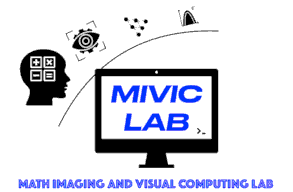| Title | Integrative blockwise sparse analysis for tissue characterization and classification |
| Publication Type | Journal Article |
| Year of Publication | 2020 |
| Authors | Zheng, K, Harris, CE, Jennane, R, Makrogiannis, S |
| Journal | Artificial Intelligence in Medicine |
| Volume | 107 |
| Pagination | 101885 |
| ISSN | 0933-3657 |
| Keywords | Computer-aided diagnosis, Ensemble classifiers, Sparse representation |
| Abstract | The topic of sparse representation of samples in high dimensional spaces has attracted growing interest during the past decade. In this work, we develop sparse representation-based methods for classification of clinical imaging patterns into healthy and diseased states. We propose a spatial block decomposition method to address irregularities of the approximation problem and to build an ensemble of classifiers that we expect to yield more accurate numerical solutions than conventional sparse analyses of the complete spatial domain of the images. We introduce two classification decision strategies based on maximum a posteriori probability (BBMAP), or a log likelihood function (BBLL) and an approach to adjusting the classification decision criteria. To evaluate the performance of the proposed approach we used cross-validation techniques on imaging datasets with disease class labels. We first applied the proposed approach to diagnosis of osteoporosis using bone radiographs. In this problem we assume that changes in trabecular bone connectivity can be captured by intensity patterns. The second application domain is separation of breast lesions into benign and malignant categories in mammograms. The object classes in both of these applications are not linearly separable, and the classification accuracy may depend on the lesion size in the second application. Our results indicate that the proposed integrative sparse analysis addresses the ill-posedness of the approximation problem and produces very good class separation for trabecular bone characterization and for breast lesion characterization. Our approach yields higher classification rates than conventional sparse classification and previously published convolutional neural networks (CNNs) that we fine-tuned for our datasets, or utilized for feature extraction. The BBLL technique also produced higher classification rates than learners using hand-crafted texture features, and the Bag of Keypoints, which is a sophisticated patch-based method. Furthermore, our comparative experiments showed that the BBLL function may yield more accurate classification than BBMAP, because BBLL accounts for possible estimation bias. |
| URL | http://www.sciencedirect.com/science/article/pii/S0933365719303239 |
| DOI | 10.1016/j.artmed.2020.101885 |
Integrative blockwise sparse analysis for tissue characterization and classification
Submitted by admin on Mon, 06/15/2020 - 13:37
